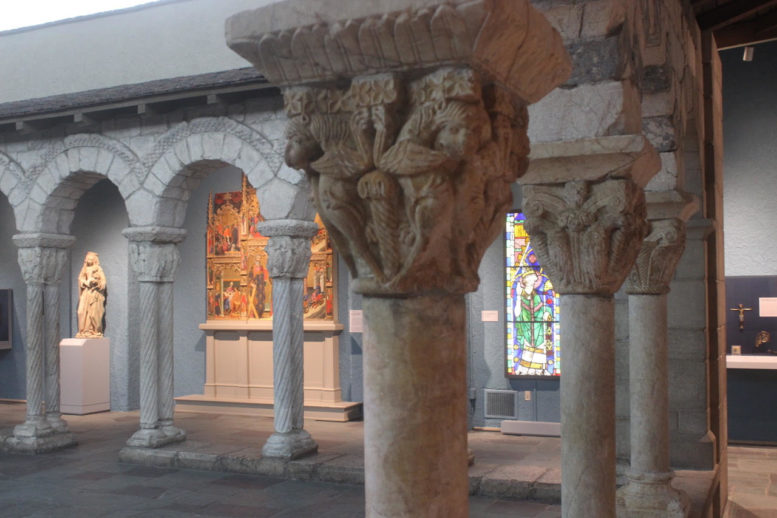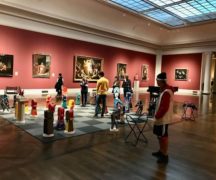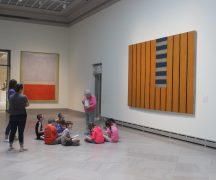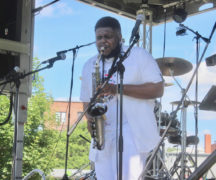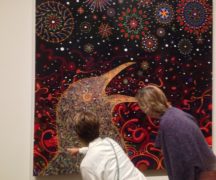By DAVID DUPONT
BG Independent News
The Cloister at the Toledo Museum of Art lets visitors travel back to a medieval monastery or convent. The refreshed and refurbished gallery – really an art work in its own right – reopened this weekend having been closed since August.
This celebration of the past is also a harbinger of the future. The refurbished Cloister “expands the scope to better reflect a more interconnected and global Middle Ages,” said Sophie Ong, the Hirsch curatorial fellow who led the restoration effort. This is a truer history of the time than is usually depicted.
The objects on display around the Cloister’s walls tell a story now dating back to 500 B.C.E., five centuries earlier than what was previously on display. And they expand the story geographically including objects from Central Africa, Ethiopia, India, China and the Middle East.
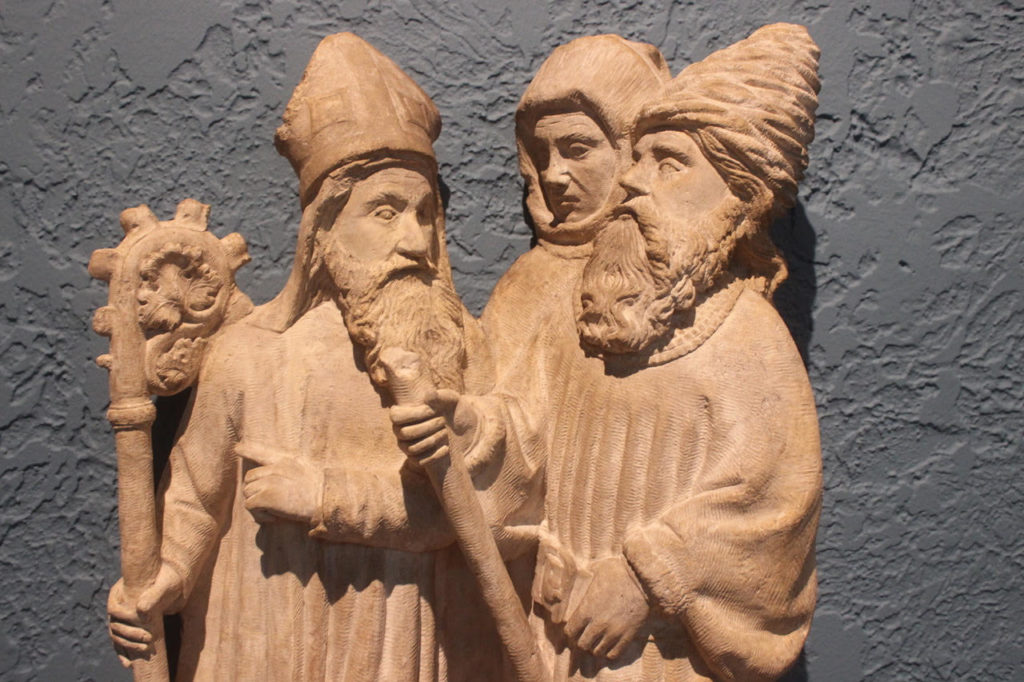
A map on one wall shows the trade routes that brought materials, techniques, styles, and religious and cultural influences to and from Western Europe. The global economy is not a recent phenomenon, Museum Director Adam Levine said.
In one case a 750-year old small ivory statue of the Virgin Mary with the Baby Jesus is displayed. The piece is intricately carved. The statue is one of the museum’s most in demand objects for loan by other museums, said Levine.
Looking at the curve of its form, he said, you can see it was carved from an elephant’s tusk. That did not come from Europe. It came from Africa. To highlight the point, another sacred sculpture, 500 years old, of a Yoruba deity, from present day Nigeria, is displayed next to the Virgin. It is also carved from ivory.
This is all in keeping with the museum’s strategic plan that calls for “blending quality and belonging,” Levine said.
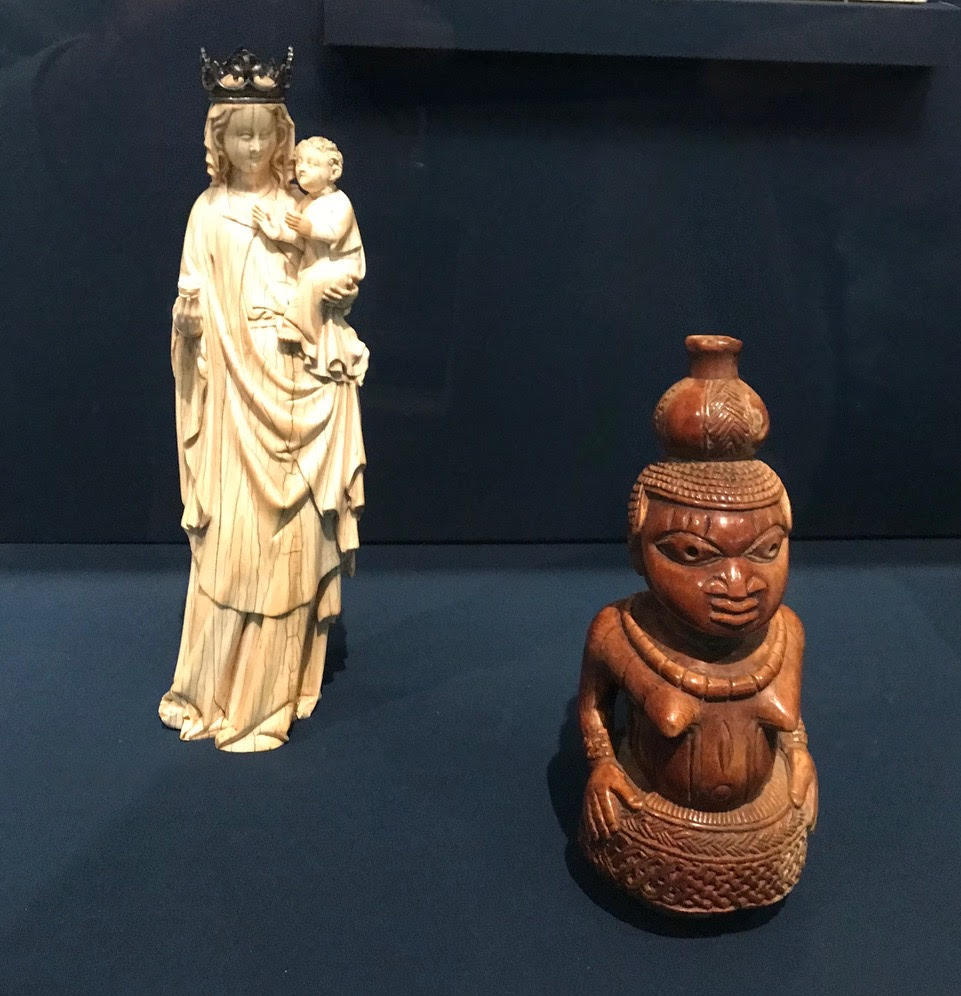
This widening of the lens from a tight focus on Western European art to the broader global context, shows how other cultures interacted, and will be incorporated in other galleries. Levine said that by 2026 all the museum’s galleries will be redone, and the approach taken in the Cloister Gallery will be extrapolated to “each and every one.”
In order to expand the vision, Ong said, some objects were pulled from storage. Some have not been on exhibit for decades.
Also, the gallery features several new acquisitions. A glass beaker from 400 B.C.E., probably from Germany, is one of the earliest objects on display.
There are also newly acquired pieces from Ethiopia, highlighting that country’s essential role in the development of Christianity. One is a book of psalms with wooden covers from the 15th century. It is displayed with a page from a 9th century Qur’an.
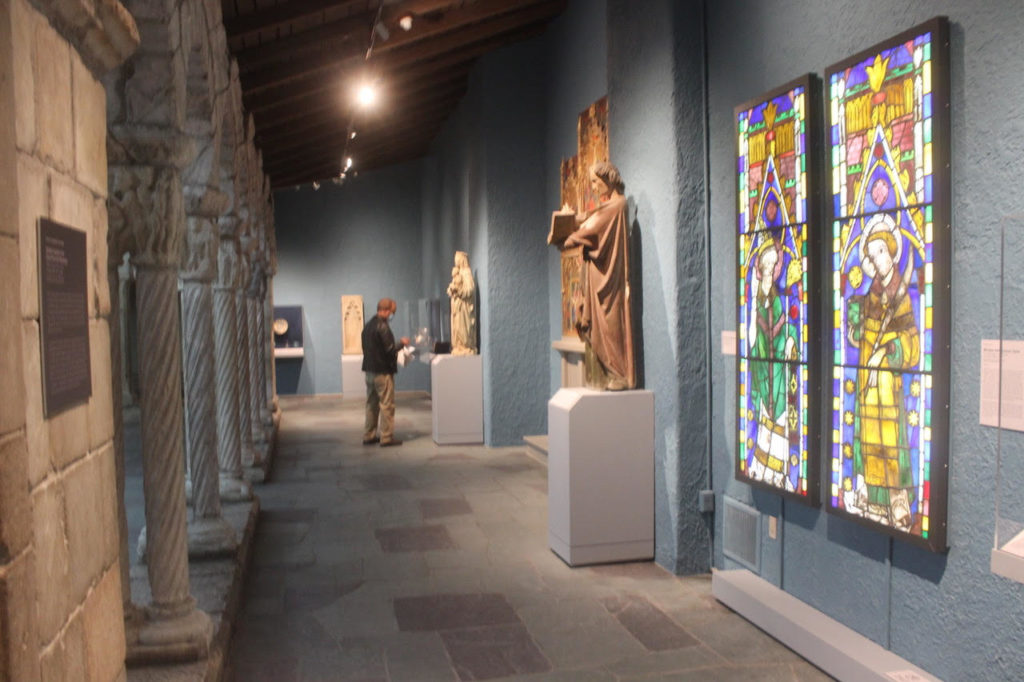
Ong also noted that the Cloister now highlights women’s roles as subjects, patrons and creators of art. This includes intricate lace work that was first purchased by Florence Scott Libbey, founder with her husband, Edward Drummond Libbey, of the museum in 1901.
The Cloister was originally opened in 1933 as part of the museum’s expansion. It was the brainchild of then-director Blake-More Godwin. It was a different time, Levine noted. The Cloister was built in secret, he said, not even the museum’s board knew about it. Not something Levine or any museum director could pull off now.
This is the second time, Levine said, that the gallery has been redone.

Ong noted that the work began with a community project in July. Volunteers were recruited to apply a gel to the Medieval French columns of the arcades to lift centuries grime from them. It’s fitting that members of the community had a hand in a project to refurbish such a beloved public space that’s now ready to welcome new generations of visitors.

